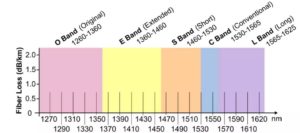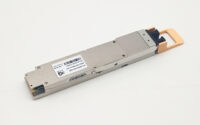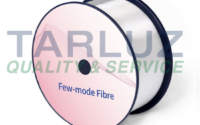Do You Know the Optic Fiber?
An optical fiber is a fiber that conducts light waves and various optical signals. In today’s information age, there is a large amount of information and data that needs to be processed and processed in economic activities and scientific research, and optical fiber is the most ideal tool for transmitting information. This is a fiber made of glass or plastic that acts as a light-conducting tool. At present, the optical fiber for communication is basically a quartz-based optical fiber, and its main component is high-purity quartz glass, that is, silicon dioxide (SiO2).
The Structure of Optic Fiber
The bare optic fiber is generally divided into three layers: core, cladding, and coating.
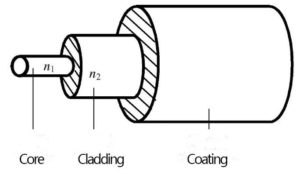
Core: The main body of the core material is silica, which is doped with a very small amount of other materials, such as cerium oxide, phosphorus pentoxide and so on. The effect of doping is to increase the light refractive index of the material.
Cladding: the material of the cladding is generally pure silica, and also contains a very small amount of boron trioxide. The effect of doping is to reduce the refractive index of the material. The refractive index of the fiber core is slightly higher than the refractive index of the cladding. The difference in refractive index ensures that light is primarily confined to the core for transmission.
Coating: It also known as the coating layer, is a layer of polymer coating, which mainly provides mechanical protection to the bare fiber. The main component of the bare fiber is silica, which is a brittle and fragile material with poor bending resistance and toughness. Poor, in order to improve the microbend performance of the fiber, a layer of polymer coating is applied.
Types of Optic Fiber
- According to the material of the optical fiber: quartz fiber, composite fiber, plastic fiber, and the like.
- According to the refractive index distribution of the fiber section:
Step (SI) type fiber: In the core and cladding regions, the refractive index distribution is uniform, respectively n1 and n2, and the change in refractive index is a step at the boundary between the core and the cladding. (n2<n1). The bandwidth is narrow, suitable for small-capacity short-range communication.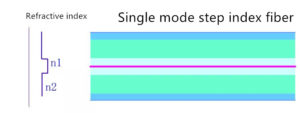
Gradient (GI) fiber: The refractive index at the center of the fiber is the largest (n1), but gradually decreases as the radial direction increases, to the boundary between the core and the cladding, just to the area of the cladding. Refractive index n2. Wide bandwidth and moderate distance communication.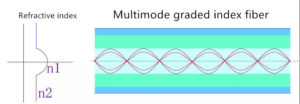
- According to the mode of transmission:
Multimode fiber (MMF): It can transmit multiple modes of light. However, the dispersion between the modes is large, which limits the frequency of transmitting digital signals, and it is more serious as the distance increases, so it is more important in the field of short-distance communication.
Single-mode fiber (SMF): It can only transmit one mode of light, so its inter-mode dispersion is very small. It is currently the most widely used in cable TV and optical communication.
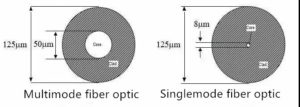
Light Wave Division
